(X-Post) Crawl Space Condensation & Humidity Solutions
mydreamhome
9 years ago
Featured Answer
Comments (47)
mike_home
9 years agomydreamhome
9 years agoRelated Discussions
X Post - Installing Slate over a living space
Comments (26)There is miss information every where online. Mistakes in cross sections and install advice easily found online. Differences of opinions around North America depending on whats used locally and what's viewed to be the best vary depending on the posters expierence and prior training. I have been doing research. I had Bob Weins from Schulter at my house - on my deck and asked him the best install. I called Dave from Custom Building Products as well. Surprise surprise I got two different opinions. You (Antss) yourself suggested I call the tech departments - I did. These men and their companies position themselves for market share - each feels their products are the best. How do they install? Best to ask the solidiers who do it every day I think. Is it wrong to discuss new ideas? Should we all just quote specs? If you read everything blindly and follow all the rules - who pays if it goes South? I have found mistakes online and have contacted the companies directly about their over sights - I'm working with two of them as we speak on revisions for their installation guidelines and specs. What if I just followed their advice? What if their advice is wrong? Internet advice is hit and miss. I have found and studied most of the top internet posters advice online and there is among these men differences in opinions - items for debate. I do not think of myself as "The Next Mike Holmes" and do not think I'm smarter than the engineers at these respective companies. But why do they keep talking to me? Why do they send me drains for testing? Why is it that one drain company all ready started working on new drawings? I know - I started the ball rolling... I want to discuss these points online. I think people enjoy reading about their options and hearing from Contractors who actually get paid to install these products. I don't like change and need to understand the science on a new product and then test it before I own the install. Ditra has been around for half my life. I have been installing it for more than 7 years. Why are the install specs slightly different in the UK than North America? Makes me wonder... I seek and crave knowledge. I love what I do. I'm am trying to be the best! I have not build many exterior decks. I am educating myself on the finer points of exterior deck construction and have always seek'd out the best advice online. My own drawings where approved from the District of North Vancouver for my home renovation. Why is it that the framing spec'd for my decks construction would fail a deflection calculation for exterior stone? Why is that? Code is code but this code many times is not good enough by my standard, Mongo's, Bill's and Mike's... Why can't we all build better. Why do we have to build the same way all the time. I have been teasing Mongo that I can't find out any information on him - but reading his posts for over a year I know he knows his stuff. Bill and I have battled online and yet he still offers me help. This shows his character and the simple fact that he tells me that he does not care what the techs tell me and that he uses this and that and this is the best way to do it - is exactly the type of "Solider Advice" "Solid Advice" I'm seeking. I bet Bill and Mongo have seen between them hundreds of exterior decks over living space. I build fireplaces and bathrooms. i am not a spec builder or custom builder. I'm a small fish in the Bathroom Fireplace renovation game. I have never built a home, a large addition or any project over $250,000 to date. Now I'm building my "Palace" "My Castle" "My kids home". Is it wrong to want the best for them? Is it wrong to seek opinions and advice from seasoned pro's? is it my fault that someone reading this thread does not do their own home work? I take my advice my spec sheets and I go to city hall - I ask my inspectors is this OK. Sometimes they say No and sometimes they say Yes. Most times they say "yes" if it is installed as per factory spec. I'm returning my CBU and installing more plywood. I have used Ditra in 95% of my projects and am sold 100 percent on the uncoupling properties of Ditra. I read in Fine Homebuilding years back about a builder in Chiacgo who switched to Ditra and his call backs went from 15% down to 1% in regards to tile installs. I was like wow! I researched Ditra. I paid for training. I talk to Bob from Schulter 2-10 times a year and have every year. Bob is a great guy. So is Dave. These men help me but I cross check their info with you men online. I have never had a callback since I switched to Ditra and started complete waterproofing of my projects. Not one call back in over 6 years! This is my process. If you want me to write these ideas in a new section of this site please suggest one for me. If you have a disclaimer you would like me to add to every post in this "Gray" area please forward it to me to attached to my posts. If you are so confident of your abilities and your finished projects please post some of your work for us to see. I know I would respect your advice more if I could view your work shots and know for sure that you are in the trades and can offer me first hand expeirence. Perhaps you can offer me some insight into my channel drain installations. Perhaps you would like to test one of these babies for me? I will stick my neck on the line and offer up my insight - I have a thick neck and am not afraid of looking foolish online (this I have proven I think in the past time and time again). I am far from perfect but strive to be the best in the industry. I produce job after job of 5 star finished projects. My home will be my best work. I'm looking for help - I'm looking for knowledge - I'm looking forward. Things should be built better, stronger, greener. This is something we can all do. Something we can all do better....See MoreAnyone use CleanSpace (encapsulated crawl space) on their home?
Comments (85)Great comments everyone...price ...can be between $2- $3/sf. Anything more is overkill. As to the smell of some companies poly ... there was a run 4+ years ago where a handful of manufacturers that made a poly that was white on one side and black on the other and was reinforced. 1 of 10 after several months to a year started smelling like cat pee and got stronger. I ripped out a handful of these crawl poly's. I wouldn't blame the sealed company's only because we all look for a deal on plastic to pass on to you ... and the odor doesn't start for awhile...that could be 400 crawls in 6 months for a handful of us. That's 40 of them stinking and 30 notice enough. About the DIY'ers ... I have DIY hardwood floors ... brakes... toilets...etc ... It takes me 6 months to get a diligent guy up and going on crawls where I can let him run and inspect his work after. I couldn't imagine the $ lessons learned that a DIY'er gets into. Just know it takes one really experienced crawl space tech and 3 new techs to finish correctly a 2600 sf sealed crawl using 50 labor hours. Know that 50% of your homes air comes from the crawl space so a poorly prepped sealed crawl can trap some pretty nasty mold. Dehu's: to use or not to use??? Tests show that mold has not grown in sealed crawls that use a 4 inch air supply line per 1500sf with average height of 2.5 ft. Though the humidity reduces down in the South (Raleigh Area) to 68%-77% when sealed still leaves high humidity compared to the average homes humidity of 52%. But mold does not grow. Why? I can only guess ... A. Ground, where mold comes from, is sealed off B. Air is slightly circulating from the air supply line on your supply side. And a dehu wholesales $1000 average ... then install and electrical hardwire hookup and gravity fed condensation line. $1600-$1800 should be fair?? And that will take your humidity down to your chosen level ... most, I have found, chose 50%. Now here's the rub ... your dehu is taking up a chunk if not all of your energy efficiency that your conditioned sealed crawl gives to your AC system. So if you don't take the old insulation out and seal in the mold and the defication from the crickets, mice and snakes and you aren't getting any efficiency out of the sealed crawl ... then why invest $ at all??? No savings or better air quality. My recco: pull floor insulation, sanitize entire crawl for SUPERIOR lifetime air quality ... seal crawl and forget the dehu and gain 15.8% energy efficiency on new homes past 2008 ... higher efficiency for older homes. My pet peeve.... if a home has mold on the beams and evidence of cricket poop ... little black pellets all over the joists ... I wont seal it without pulling the insulation and disinfecting the crawl. But 95% of all companies seal the crawl trapping in ALL THAT MESS and that's there standard seal crawl practice. That should be criminal!!! Like all the contractors who knew back in early 1900's that lead based paint was killing children but kept using it because it was cheap ... until 1970's when a law was passed after ??? more than a million baby's past away. I feel mold in the crawl is that same issue that is slow to REAR ITS UGLY HEAD ... buyer beware ... short cuts can hurt you long term. www.SealedSolution.com...See MoreMold Moisture In Crawl Space
Comments (1)you have two sources of moisture. ground and ductwork. both would have to be addressed. sealing ductwork with mastic materials & vapor barrier on ground would be necessary. What type of duct work do you have? flex duct or hard pipe ducting? is the heating equipment in the crawlspace? is it gas? any insulation in the joist bays of the floors? how many openings do you have in the crawlspace? best of luck....See Morenew crawl space in old house question?
Comments (1)I really can't quite figure out what is going on ..... why did GC make a hole and in what surface did he do that? Are you just pumping an old cistern, well or cesspool? Did you know there was water/fluid there before you enclosed the space? More info would be helpful! I can offer this: my well (hand dug to a spring) is under my mudroom floor. Well has a teak cover on it that fits pretty well, but we often have condensation issues ( all seasons) because of that. A problem I haven't quite solved. However our situation is different from yours since we don't intend to eliminate the well, we have to concentrate on managing the humidity. It sounds like you may (after removal of water/fluid) be able to put vapor retarder carefully down on the surface, and carefully apply moisture seals around the opening. Whether you also decide to do some active ventilation in the crawl space depends on a lot a of factors, which is why a clearer description would help. I'm really curious why the pumping didn't occur before you enclosed such a small space. With it enclosed you may have a very difficult problem to install what you need. But I'm probably just confused (wouldn't be the first time, since lunch!) Molly~...See Moreionized_gw
9 years agosktn77a
9 years agomydreamhome
9 years agomike_home
9 years agoionized_gw
9 years agoenergy_rater_la
9 years agojackfre
9 years agopelkeytm
7 years agoVictoria Deane Gómez-Wright
6 years agodhrockypoint
6 years agosktn77a
6 years agoRich
6 years agoSaltiDawg
6 years agolast modified: 6 years agopelkeytm
6 years agoRich
6 years agopelkeytm
6 years agoionized_gw
6 years agoSaltiDawg
6 years agoionized_gw
6 years agoRich
6 years agoeric62
5 years agopelkeytm
5 years agoionized_gw
5 years agoeric62
5 years agoionized_gw
5 years agoeric62
5 years agoHU-563552721
4 years agoWerhat
4 years agolast modified: 4 years agoT Burns
3 years agoHU-563552721
3 years agoWerhat
3 years agolast modified: 3 years agoT Burns
3 years agoT Burns
3 years agoHU-563552721
3 years agoT Burns
3 years agoWerhat
3 years agoHU-563552721
3 years agoHU-563552721
3 years agoDurbar Biswas
3 years agoHU-563552721
3 years agolast modified: 3 years agoWerhat
3 years agolast modified: 3 years agoHU-563552721
3 years agosharonm112
2 years agoRob Odom
2 years ago
Related Stories
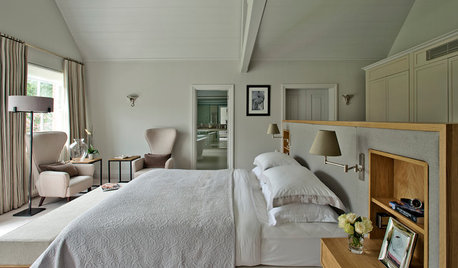
ORGANIZINGSmart Solutions for Clothes Closets
The Hardworking Home: Explore these ways to store your clothes, shoes and accessories to make the most of your space
Full Story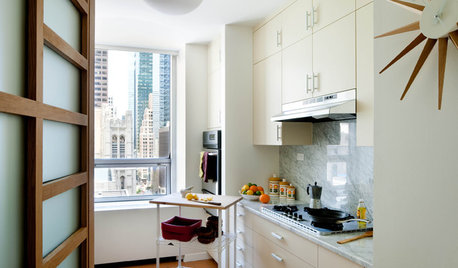
KITCHEN DESIGN17 Space-Saving Solutions for Small Kitchens
Clever storage and smart design details do wonders for tiny kitchens
Full Story
KITCHEN DESIGNThe Perfect Kid-Friendly, Storage-Happy, Style-Loving Seating Solution
Turn a corner into do-it-all kitchen seating with a customizable banquette, and let the comfy-cozy mealtimes begin
Full Story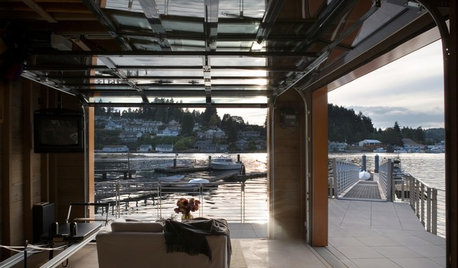
DREAM SPACESDesign Workshop: The Case for Big Overhead Doors
Garage-style doors are cost-effective solutions for opening rooms to dream views and fresh air — and they’re more stylish than ever
Full Story
GREAT HOME PROJECTSPower to the People: Outlets Right Where You Want Them
No more crawling and craning. With outlets in furniture, drawers and cabinets, access to power has never been easier
Full Story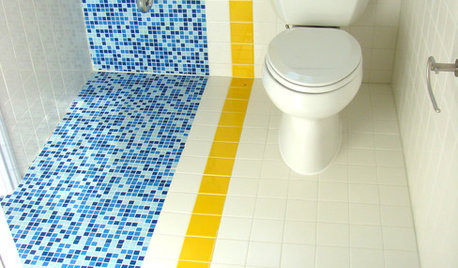
BATHROOM DESIGN9 Big Space-Saving Ideas for Tiny Bathrooms
Look to these layouts and features to fit everything you need in the bath without feeling crammed in
Full Story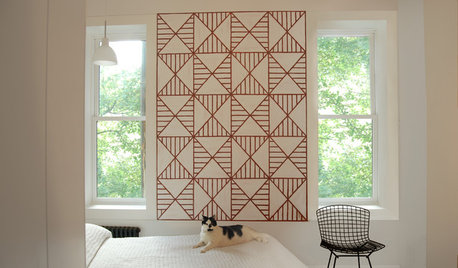
PETSHouzz Call: Send in the Design Cats
Post your best photo of your cat at home, in the garden or with you in your studio. It could be published in a featured ideabook
Full Story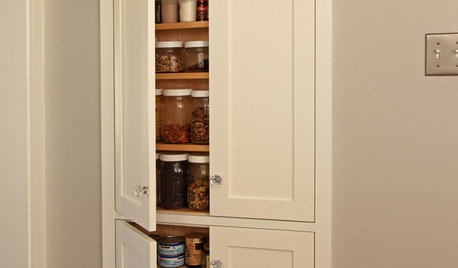
STORAGETap Into Stud Space for More Wall Storage
It’s recess time. Look to hidden wall space to build a nook that’s both practical and appealing to the eye
Full Story
BASEMENTSBasement of the Week: A Creative Space for Kids and Storage for All
With mudroom organizers, laundry and a well-organized space for crafts, this basement puts a Massachusetts home in balance
Full Story
KITCHEN STORAGE11 Space-Savvy Alternatives to Wine Cellars
Don't be crushed without a dedicated room for your grape varietals. Store and display your wine the creative, budget-friendly way
Full Story


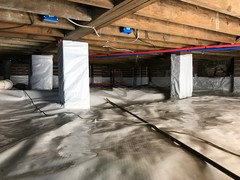
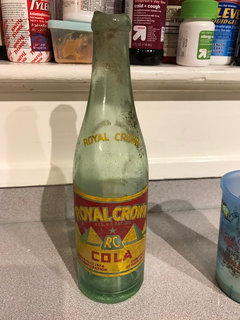

Rob Odom